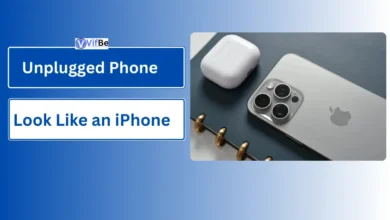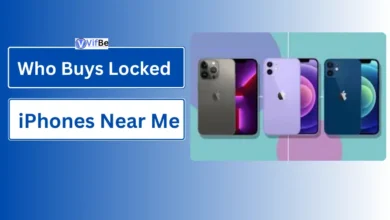Can a Nissan Leaf Use a Tesla Charger? Understanding Compatibility
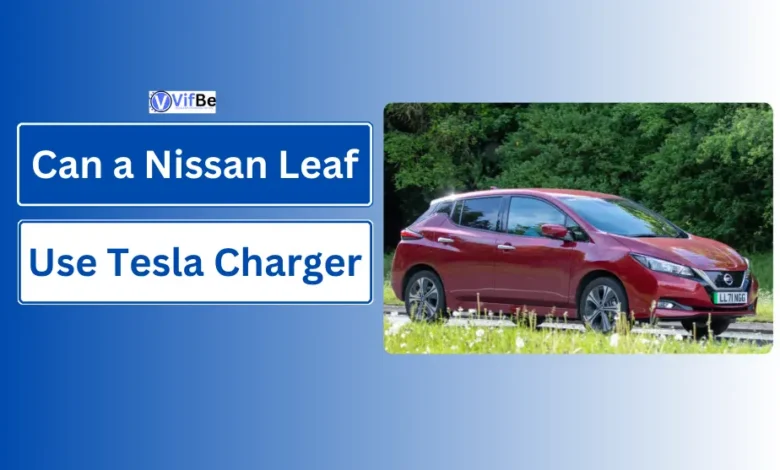
Charging solutions are always an important question for every EV buyer and for every EV owner potential and as the market expands at significant rates and even in unexpected markets we are seeing more and more people getting interested in understanding the charging options and compatibility. Another concern that people have is whether a Nissan Leaf can charge with a Tesla charger. The answer is not that simple because of various charging norms, but knowing the details will be helpful in this essential area of using electric cars.
In this article, I will describe all the possible ways of charging the Nissan Leaf, compare it to Tesla charging, and consider the question of compatibility for electric cars.
Using Adapters
Owners of Nissan Leaf who desire to tap into Tesla charging network, adapters pose such a possibility. The connectors that Tesla possesses are not compatible with Nissan Leaf but there are other producers who have created converters that allow Nissan owners to connect to the Tesla charging system. However, the performance and safety of these adapters may be different and, therefore, it is recommended to study the matter and buy an adapter carefully.
Nissan Leaf drivers can use an adapter to access Tesla’s Supercharger stations, but they need to know the disadvantages and drawbacks. For example, charging rates may be limited if an adaptor is used, and therefore the charging is much slower than anticipated. In addition, the market is saturated with various adapters but investing in a low-quality product can be dangerous to your car battery and the other components it charges.
Charging Network Availability
The last objective factor is the ample networks for charging where candidates’ devices may be charged. The stations are located along the freeway and cities; thereby, intercity charging for Tesla vehicles is less complicated. However, Nissan proved to charge on CHAdeMO network that is growing but does not enjoy broader coverage than Tesla network.
Charging stations for electric cars have been established to be common in the public domain but their site may be limited in certain areas. Nissan Leaf therefore may be relatively harder to find good charging stations that are conveniently located compared to Tesla’s vehicles. This difference affects travel plans and the general charging convenience especially for people who use public charging stations.
Impact on Battery Health
On every electric vehicle, the life expectancy of the battery is a central consideration. Chargers that are not standard can at times also prove to be dangerous to the battery including damaging it. This means that using Tesla chargers with Nissan Leaf indirectly through an adapter may bring factors that Nissan Leaf’s BMS was not programmed to deal with. This could also spawn wrong charging behaviors which may harm the battery in the long run due to some suboptimal charging algorithms.
Charging of your vehicle should be something you are cautious about and also have knowledge on how various charging processes impact on your battery. Your Nissan Leaf battery has recommended maintenance practices to be done for its durability to be realized and one of them is to follow manufacturer’s recommendations on how to take care of the battery.
Future of EV Compatibility
The question of the compatibility of EVs is dynamic and evolving as vehicle manufacturers understand the importance of standardizing the way they recharge. Presently many discussions are made in order to create some form of charging solutions that could be used in any brands of EVs.
In the future existence of the EV market, the technology may improve on compatibility allowing Nissan Leaf and Tesla owners to share charging facilities.
Thus while there can be chasing after market share by one player at the expense of another especially as the switch to electric vehicles gains traction we see a lot of advancement in charging standards and networks for the good of all parties involved via electric vehicle users. The complexity of charging leading to inefficiencies already highlights the interactions between manufacturers as well as the standardization of these charging systems might provide an additional unified approach.
What You Need to Know About Nissan Leaf Chargers
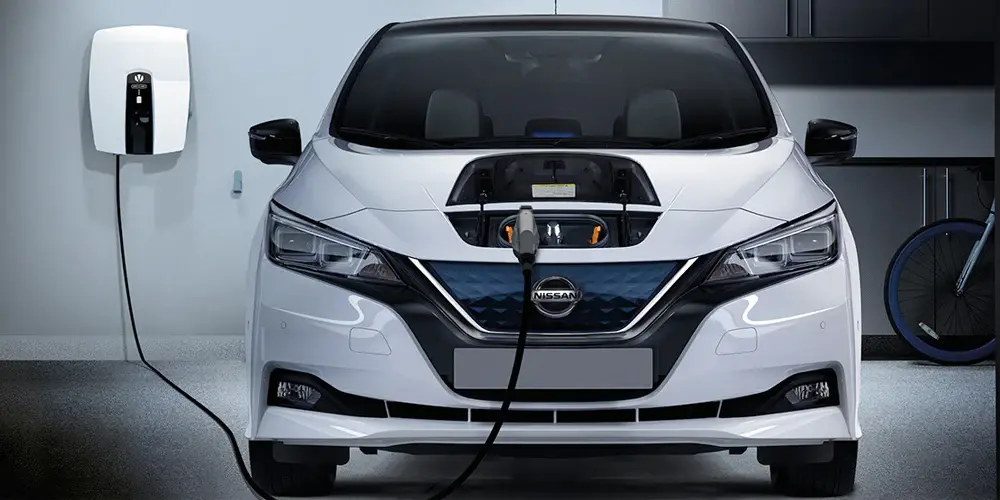
In a nutshell, it is flexible in charging capability so that the users of Nissan Leaf can select the type that best suits their options. The Leaf uses a Type 1 connector which is good for both home solutions, as well as for public charging stations for Level 1 and Level 2 charging.
Moreover, for those who may require charging with a higher amperage, the car is compatible with the CHAdeMO fast charging that can connect it to the fast charging stations. Nissan Leaf drivers should be familiar with these various types, as they clearly affect charging time and the extent of the convenience.
Tesla vs. Nissan: Charging System Comparison
As an analysis compares the charging interfaces of Tesla and Nissan, disparities occur. Tesla’s charging system, comprising of the Supercharger network is optimized for Tesla cars and makes use of a Tesla proprietary connection interface intended for high-powered charging points.
The Nissan Leaf on the other hand uses CHAdeMO for Dc fast charging and Type 1 for AC charging. These separatechenetworksyield; digital services that enhance Tesla’s ownership experience yet limit Nissan Leaf drivers when seeking fast charging. They emphasize that the battle is heating up on the charging infrastructure as the EV market evolves in the foreseeable future as the key factor that would impact EV acquisition and usage patterns.
So can Nissan Leaf owners use Tesla charging stations?
One major issue of concern that Nissan Leaf users have is being able to charging their car at Tesla charging stations. While I can see that Tesla has set up numerous Supercharger stations and that there are spare wirings on the car, the design of Tesla connectors will not let it directly connect with Nissan Leaf even through the OBC port without using an adapter.
Although some third-party adapters have been built to help create this connection, doing so will likely reduce the charging rate as well as cause harm to the battery of the car. Additionally, Tesla’s charging stations are exclusive to their branding, so any charging network is non-compatible with the CHAdeMO and users have to exercise a lot of care and should preferably consider the ramifications of using adapters.
Thus, although some Nissan Leaf owners will try charging their cars at Tesla stations, the experience may be more complicated than for Tesla owning automobile users.
Charging Your Nissan Leaf
Thus, it is recommended that the Nissan Leaf owners observing the following practices to maximize the vehicle charging success rate and battery life. To start with, the recommended charging connections should be used at all times and one should avoid using chargers.
The issue of frequently using charging stations beyond home should be addressed since using Level 2 charger at home can help the battery to gain needed health. Also, information about the battery state of charge of the electric vehicle and preventing deep discharges can help increase battery life. Incorporating such best practices will add custom to the charging experience, and can in one way or the other improve the life of Nissan Leaf battery.
The place of charging stations in EV ownership
EV charging points can be regarded as critical components of the total experience of the ownership of an electric vehicle. They serve a vital supporting role that makes it possible for users of the EVs to charge their machines in comfort. To Nissan Leaf owners, charges are a factor that determines the type of car to own, their daily movements, destination, and even plans for a cross country trips.
It follows that a strong network of charging infrastructure reduces range anxiety while at the same time creating a culture towards environmental conservation. Since more charging stations are likely to be established in the future, consumers are most likely to further embrace electric vehicles.
Tesla’s Supercharger Network:
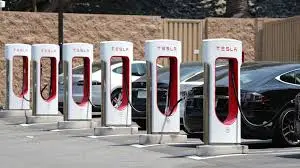
Elon Musk’s Tesla has been probably one of the most successful and widespread auto companies with the expansive and strategically placed Supercharger networks in the globe. The Supercharger stations are intended to be used by Tesla owners who are engaged in long distance travel; the stations incorporate a high speed recharge to ensure that travellers can get back on the road in well under an hour.
This is beneficial to all the users of Tesla but a problem to Nissan Leaf as it is an incompatible network. Per hearing and reading about the Supercharger network, people may have an idea with regards to the strengths and weaknesses of Tesla charging centers.
There remains a possibility for improved compatibility between differing brands of EVs as the market matures in the future the Nissan Leaf owners may be able to utilise Tesla’s developed infrastructure.
Charging Your Nissan Leaf – Tesla Style
As for the owners of Nissan Leaf, who decided to use the Tesla’s stations, they have to make some changes. What can be done is to use other third party adapters In this case, no direct compatibility is possible. That said, one must have to be very careful when it comes to the quality and detail specifications of any given adapter.
To reiterate what has been previously said, the charging speed can be affected, and there is always a risk to battery health. One should remain an intelligent consumer when purchasing an adapter and heed the recommendations from Nissan as well as the descriptions of the adapter that has been purchased from the manufacturer of the part. However, while aiming at using Tesla charging stations, Nissan Leaf owners can give it a try if they want considering the following risks.
Charging Infrastructure:
Indeed the know-how of charging infrastructure is critical in enhancing the prospects of Nissan Leaf owners when switching to EV. Due to the CHAdeMO and the Level 2 chargers knowledge, the Leaf drivers are in a position to plan effectively for their charging.
Further, it is useful to study the local charging networks and applications in order to simplify the process of charging as much as possible. Owners of LEAFs should also know the cost incurred when charging at public stations as its cost depends on the area and the network provider. Proactive action to charging infrastructure freedom is needed for situations when the Leaf driver needs or wants to charge the vehicle and avoid such inconveniences as either paying too little or too much.
Comparing Charging Times: Tesla vs. Nissan Leaf
Huge differences are observed when the charging times of Tesla and Nissan Leaf are looked at or compared. At Tesla, there is what is called the Supercharger Network which enables fast charging and that is usually charging that can take up to one hour to charge the car up to approximately 80%.
In the same manner, Nissan, with its ability to fast charging through CHAdeMO station, the Nissan Leaf may take longer time to full charge and this is compounded when charging Level 2. This is especially important to Leaf owners since charging time may directly affect planned trips, as recognized differences between the vehicles exist. It is also important to note that knowledge of the time when charging occurs can also affect daily operation by making the owners of Leaf use home solutions.
Learning of the Cost of Charging of a Nissan Leaf
It is equally crucial for present and potential Nissan right now Leaf EV owners to know the cost of charging an EV. The cost of charging expenses depends on many things – on which type of charging station is used, the local rate of electricity consumption, and even the speed of the charging process.
Self discharging is typically cheaper and is even cheaper when using off-peak electricity tariffs. On the other hand, charging stations in the public domain may employ set fee per kilowatt hour, or even extra fees for services provided. Understanding those costs allow building appropriate plans, charging strategies for Nissan Leaf owners. The availability of different charging solutions enables drivers to determine which of the solutions is most cost-effective.
Innovative charging systems for EVs
This strategic growth opportunity connects to the second strategic growth opportunity: the continual development of new developments in the technology used for EV charging. From improvements of the charging density to the emergence of common ports, experts have potential solutions to offer to the owners of electric vehicles.
New technologies are gradually emerging, and, therefore, consumers are likely to encounter multipurpose charging stations capable of charging Nissan and Tesla fleets and all other types of models in between. However, smart charging solutions that leverage information to find the right time and cost of charging the batteries are currently common.
Besides improving the utility of owning an EV, these innovations also help to advance the cause of MEV charging, and not simply for specific early adopter niche users. Knowledge of these advancement is crucial for Nissan Leaf owners, since these are make a overall charging process much easier.
Charging Network Site Accessibility
One of the key enablers to the mass market adoption of electric cars is the ability to access charging networks. It is therefore significant for owners of Nissan Leaf to have an easy time in search for these charging stations in order to be content with it.
If there are convenient locations such as public EV chargers, and fast charging stations around, Leaf owners can use the vehicles on long trips without the worry of the batteries discharging. On the other hand, having less places to charge your car might make a potential buyer to not even consider a car that uses electricity in the first place.
Since cities and governments have started developing investment towards the expansion of the related infrastructure, this paper carefully examines the significance of charging network accessibility which cannot be overemphasized. For the further development of electric vehicles, provision of the charging points is crucial for supporting the electric structure.
User Experiences:
Several users shared their interactions with the fact of Level 3 charging a Nissan Leaf at the Teslar stations as well as using third-party connectors. In the real sense, some of these Leafs’ owners have been able to successfully charge their cars while others have faced some challenges such as a slow charging time and some challenges with the charging adapters.
Furthermore, other Tesla services do not allow Leaf owners to charge their cars which frustrating during such dilemma. Thus in general there are situations when Nissan Leafs use Tesla charging equipment according to some consumer reports of positive cases, nonetheless the conditions depend significantly on the utilized equipment. Some advice from fellow car owners who own Leafs can help those who are new to this environment.
Common Courtesy of Nissan Leaf Charging at Public Places
Because charging time is precious to every electric vehicle owner, charging etiquette is a key part of public charging usage experience. Nissan Leaf owners specifically should avoid such practices like charging the battery fully and instead leave the charging station only to be used again by another EV driver in need of a charge.
Adherence to time limitations at the charging stations is important so as to facilitate a fair service to all the charging system users. More, not daydreaming during charging also helps prevent long waiting time for other individuals still in the queue. If Nissan Leaf owners follow some basic charging etiquette, they will help in the improvement and foster an efficient, positive EV use.
The Advantages Offered by a Flexible Charging Structure
The ability to charge an EV from any source is an added bonus for DPRGN, Nissan Leaf and other EV owners. Accepting more than one kind of charging power like Level 1, Level 2, and DC fast charging works to the advantage of owners of the Leaf, since options help in Orienting the charging process depending on the owner’s preference and requirement.
Hence, flexibility is that charging options are all rounded so that drivers can get the convenient one no matter if they’re at home, at work, or on the road. Moreover, a diverse charging system minimises the drawback of certain networks, which means that Nissan Leaf owners can feel relieved as they look for their EV future.
Knowledge Concerning Different Charging Connectors
This post reveals the types of charging connectors currently in use, essential for electric vehicle owners interested in compatibility and convenience. The Leaf adopts the Type 1 connector for Level 1 and Level 2 charging and the CHAdeMO as a fast charging system.
On the other hand, the present Tesla vehicles possess an exclusive connector that has no compatibility with the CHAdeMO. Also, there appear to be growing numbers of vehicles that are integrating the CCS (Combined Charging System) connectors as more carmakers deploy fast charging systems. Getting to know these connector will be beneficial in The search for proper charging stations and even generally in make the charging process much easier.
Current practices in Electric Vehicle charging.
To the extent that electric vehicles are becoming increasingly common, the ecological implications of charging processes are another matter of concern. When one uses renewable energy such as solar or wind to charge a Nissan Leaf, then it can be agreeably called an eco-friendly car.
However, using them to charge at stations which are powered by fossil energy can negates some of the benefits of owning EV. Owners of electric Leafs thus need to be aware of the source of their electricity and try to use renewable electricity when charging their Leafs. In order to support a cleaner power system for the future charging practices need to be planned effectively hence making smart decisions about charging for electric vehicles as a solution.
Charging a Nissan Leaf: Tips for New Owners
Owners of the new Nissan Leaf, it’s important to know much more about the charging procedure in order to make the process of owning an EV a pleasant experience. One good advice here is to be aware of the local charging systems with both CHAdeMO and Level 2 stations. The purchase of a home charging station can make charging during the night possible as well as offer a safe means.
Moreover, it is possible to learn the charging costs and use applications to find charging stations for their effective use. Last but not least, familiarising yourself with your Leaf’s Battery Management System and charging advice will keep your battery healthy.
Explantion as to how Charging Compatibility Affects EV Adoption
There is nothing more critical than charging compatibility in the process of overall electric vehicle expansion. According to respondents, a lack of proper charging facilities or the inability to charge at such facilities might be an essential factor in one’s decision not to purchase an EV.
By making charging standards more general and widening the networks of compatible charging stations, manufacturers can address these factors, therefore, incite more frequent switching to electric vehicles. When charging compatibility increases there is acceptance of the EV technology by consumers and this widens its acceptance in the overall consumer market.
Multi standard charging stations are also on a steep rise.
Multi-standard charging stations are an important development in the current quest to have more places where EVs can be charged and do it interchangeably. These stations can accept different types of connectors such as CHAdeMO, CCS, and Tesla’s own system, therefore the stations are of great assistance to the users of electric cars.
This versatility also complements convenience for the users but also reduces some issues with the charging infrastructure design. Given the current global trends regarding EVs, the use of multi-standard charging stations is expected to be one of the key contributors to the evolution of the charging system.
Conclusion
Finally, it should be stress the fact that the Nissan Leaf cannot directly plug-in to the Tesla charging infrastructure because of the difference is charging protocols yet there are available ways of making the connection possible for example through the use of adapter. However, the possibilities of getting charged speed and batteries’ lifetime may be charged degrade should be considered.
This trend leads to changes in the characteristics of the charging infrastructure and increases the importance of understanding the compatibility of an EV with its charging network by its owner. With adequate knowledge and effort the Nissan Leaf drivers can conquer the charging infrastructure excellently as they prepare and transition to the electric world.
FAQ: Related Can a Nissan Leaf Use a Tesla Charger
Can a Nissan Leaf charge at Tesla Supercharger stations?
The Nissan Leaf for instance cannot charge directly at the Tesla Supercharger since there’s a difference in the charging technology. Tesla has adopted its own connector while the Nissan Leaf normally has an AC inlet’s CHAdeMO connection or a Type 1 connection. Although the Tesla connector can be plugged into an adapter, some of the users have reported that they were able to charge their Leaf at the Tesla stations but not all of them.
What is the CHAdeMO charging standard?
For instance, Nissan cannot directly at the Tesla Supercharger as there is a variation in charging systems. Tesla has established its own form of connection while the Nissan normally provides for a CHA de MO connection at AC inlet or a type one connector. While the Tesla connector can be connected to an adapter, some of the users noted that they got to charge their Leaf at the Tesla stations but not all of them.
Are there adapters for using Tesla chargers with a Nissan Leaf?
There are upgrades, such as installing adapters which allow Nissan Leaf owners to use the Tesla charging stations. Yet, some incompatibility is possible, and the rate of charging will not necessarily be the maximum. It is recommended that users should ensure that choose an appropriate adapter for their specific make and model of the Leaf.
How does charging at public stations work for Nissan Leaf owners?
Regenerative charging at public stations requires identification of publicly accessible CHAdeMO or Level Two charging stations. Charging network: Customers may begin a charging session using a mobile application interface or RFID card associated with the charging network. It is better to check available stations and connectors before coming to the station.

